GFDL summer interns take on a variety of projects
Summer internships are underway at GFDL, despite the limitations posed by the COVID-19 pandemic. Undergraduate students will conduct a research project remotely, under the guidance of GFDL scientists. While many of the interns plan to pursue a career in climate research, some hope to use the skills they learn at GFDL in environmental law or social justice projects.
“Internships at GFDL provide a unique opportunity to demystify the complex and interdisciplinary field of Earth system modeling towards building the next generation of researchers demanding not only description of the Earth processes but understanding the context, connections, and implications,” says John Dunne, GFDL Research Oceanographer.
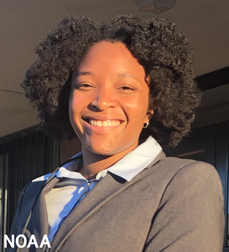
Howard University undergraduate Trinity Gbla appreciates that Dunne, her mentor, was open to her ideas. “He really took into account my interest in climate change science, and that I want to tie it to social justice issues. I wanted to mesh those two areas of my life together,” she says. Gbla, who is majoring in Environmental Engineering, will be researching anthropogenic heat stress. “I also thought that this would be a good challenge for me… because it was something I had never studied before.”
Gbla won a scholarship through the José E. Serrano Educational Partnership Program with Minority Serving Institutions. Congressman Serrano of South Bronx, New York City, was dedicated to social and environmental justice.
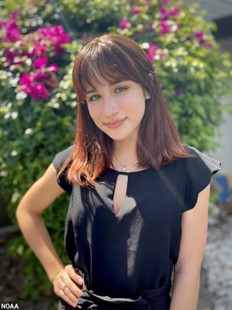
Nadia Vidal Difre, a Biology major at the University of Central Florida, also won a Serrano scholarship. Her project focuses on the impact of climate change on loggerhead turtle habitats. Influenced by her father’s Coast Guard career, Vidal Difre has long been interested in climate change and ocean studies.
“When I was in Puerto Rico for hurricane Maria, I got to see the Office of Response and Restoration taking out capsized vessels from one of the main roads,” she said. “It was all just fascinating to me, to see how many different things you can do in NOAA. It is such a great organization.”
After she completes her undergraduate studies with a focus on marine biology, Vidal Difre plans to pursue a Masters in Chemical Oceanography.
GFDL Intern Shane Russett, winner of an Ernest F. Hollings Undergraduate Scholarship, is interested in the related field of biogeochemistry. The scholarship is named after Senator Hollings of South Carolina, a champion for ocean policy and conservation. Russett considers the scholarship program an “invaluable tool” for gaining experience and “a stepping stone for graduate school.” He is currently an undergraduate student at University of California, Berkeley, where he is studying atmospheric science and working in the Silver Lab on biogeochemical research. “The outside world has always captivated me,” Russett says. “My summer project is looking at future projections of short-term climate forcers, such as ozone and [fine] particulate matter.”
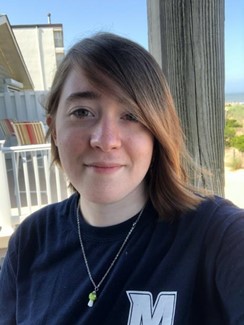
GFDL Physical Scientist Larry Horowitz will mentor both Russett and another Hollings Scholar: Johanna Vonderhorst. Her project will look at the effect of the Clean Air Act. Vonderhorst is currently completing a double major in chemistry and political science at Monmouth University. Like Russett, Vonderhorst is also considering law school. “If I am going to go into climate law… I want to get some real life experience working with the science research that goes into making these laws,” Vonderhorst said.
Penn State University student Katherine Seikel is also considering going to law school, so she can impact policy decisions. “Whether I’m doing my Masters or PhD I’m not 100 percent sure yet but this internship at GFDL is really going to help me build those skills that I’ll need for graduate school,” she said. Seikel said she first heard about the Hollings Scholarship from upperclassmen at her school. “They thought it was really valuable,” Seikel said. Her interests in atmospheric dynamics and coding led her to GFDL’s FV3 group.
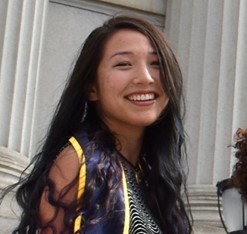
CIMES Postdoctoral Research Associate Marion Alberty says the internship programs at GFDL will provide great exposure to a field that is sometimes overlooked in education. “In my experience, Earth Sciences was not highlighted in the K through 12 and even undergraduate curriculum… so I think having these kinds of opportunities are so important for giving young budding scientists a sense of what you can do as an earth scientist,” says Alberty, who will be supervising Intern Macy Chang.
Chang is an Environmental Engineering student at the University of California, Berkeley. She is also a participant in the William M. Lapenta NOAA Student Internship Program, which is named after the former director of the National Centers for Environmental Prediction. “I enjoy the challenge of learning what underlies all these models,” she says. “We are investigating changes in the transport of both water masses and dissolved iron content in the tropical Pacific, specifically in this region called the Solomon Sea.” These water masses feed nutrients such as iron to the Pacific Ocean so it’s important to understand how we can accurately represent those flows, and how they might change with climate.
Chang says she’s always been interested in science, even as a child. But it took her a while to find her niche. “I enjoy the challenge of learning what underlies all these models,” she says. “It’s fascinating.”
It also took Hollings Scholar Justin Sankey a while to figure out what he wanted to do in science. Initially, he wanted to go into medicine and follow in his parents’ footsteps. “I was miserable,” Sankey said. A Semester at Sea helped Sankey realize he was a natural on the water. “We got stuck in a two-week-long gale that had like 30-foot seas and 50-knot winds… and I was fine.” Sankey, a student at Lawrence University in Wisconsin, says there are a lot of career paths that interest him but he can see himself getting a PhD in chemical oceanography. “I would love to just be in the field as much as I can,” he said. “I absolutely love being out on the ocean and doing deployments.”
Sankey’s project will involve studying reactive oxygen species in the ocean. “Phytoplankton will release reactive oxygen species as a defense mechanism, sometimes towards parasites. So I’m looking at [phytoplankton] as a source of reactive oxygen species, but also looking at how they interact with reactive oxygen species.”
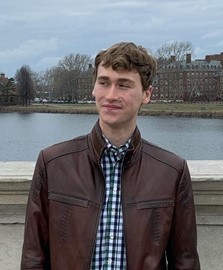
As a child, Hollings Scholar Theo Frantz says he was largely interested in astronomy. It wasn’t until his senior year of high school that he discovered his love of meteorology. “I got a very, very amazing opportunity to do research with a professor at North Carolina State,” Frantz explains. Now Frantz is a Meteorology student at the University of Oklahoma. For his internship, Frantz will study the interaction between climate change and severe weather. “We are still figuring out the rules of tornadoes, hurricanes and that kind of stuff. But they are changing as we’re figuring them out. We need to figure out how they’re changing, so that we can still be on top of it, help people and save lives,” Frantz says.
Hollings scholar Julian Schmitt will spend his internship studying snow drought frequency and severity in the Western U.S. using the SPEAR large ensemble model. A competitive Nordic skier and Applied Math major at Harvard University, Schmitt is pleased his project will combine his interests in snow and math. Schmitt explains that snow drought is an important research area because it impacts “everything from summer water supply and population dynamics to the ski and tourism industries. Will there be enough moisture in the next 100 years to prevent really devastating fires or extreme water shortage?” Questions like these, Schmitt says, are why this area really matters.
Both Frantz and Johnson will be working with the same mentor: GFDL Meteorologist Nathaniel Johnson. “I hope that they experience the joy that comes with applying their creativity to solve cutting-edge science problems that potentially may impact people and that this experience enriches their education in ways that cannot be accomplished in a classroom alone,” Johnson says.
| Intern | Mentor(s) | Scholarship |
|---|---|---|
| Macy Chang | Marion Alberty | William M. Lapenta NOAA Student Internship Program |
| Theo Franz | Nathaniel Johnson and Kai-Chih Tseng | Ernest F. Hollings Undergraduate Scholarship |
| Trinity Gbla | John Dunne | José E. Serrano Educational Partnership Program with Minority Serving Institutions |
| Shane Russett | Larry Horowitz | Ernest F. Hollings Undergraduate Scholarship |
| Justin Sankey | John Dunne | Ernest F. Hollings Undergraduate Scholarship |
| Kate Seikel | Lucas Harris | Ernest F. Hollings Undergraduate Scholarship |
| Julian Schmitt | Nathaniel Johnson | Ernest F. Hollings Undergraduate Scholarship |
| Nadia Vidal Difre | John Dunne | José E. Serrano Educational Partnership Program with Minority Serving Institutions |
| Johanna Vonderhorst | Larry Horowitz | Ernest F. Hollings Undergraduate Scholarship |


